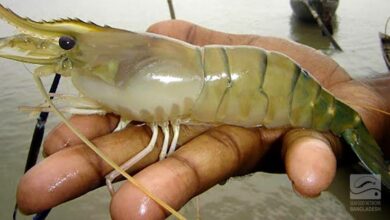
In Bangladesh, despite being a leading producer of freshwater fish globally, there’s a noticeable trend of increased fish imports, even though the country is largely self-sufficient in fish production. Over the first two months of 2024, the Department of Fisheries authorized the import of over 16,000 tonnes of frozen and dried fish, showcasing a rising trend in imports.
The surge in fish imports is attributed to various factors, including the need to meet specific consumer demands and the preference of certain groups, including foreign nationals residing in Bangladesh. Moreover, there’s a growing market demand for low-priced fish varieties, prompting an increase in imports.
Most of the fish imported in the country is marine fish. Last year 100K tons of fish imported, about 58K tons were marine fish. The marine fish include sardines, shad or gizzard shad fish, sourced from countries such as Myanmar, Oman, the United Arab Emirates, Thailand, Vietnam and even Uruguay.
However, India serves as the primary source of fish imports for Bangladesh, supplying a variety of species such as rui, katla, aair, boal, poa, kachki, baim, vetki, tuna etc. Furthermore, dried fish imports from India consist of kachki, chanda, loitta, and tengra.
Stakeholders say that Indian rui / rohu fish once held a monopoly in Bangladesh’s fish market a decade ago, but subsequently, rui fish from Myanmar dominated the market. However, due to recent unrest in Myanmar, the import of rui fish from India has resurged. The production of rui has also increased in Bangladesh by the time.
The majority of fish imported from India enters through the Benapole land port in Jashore, the Sona Masjid land port in Chapainawabganj and the Bhomra land port in Satkhira.
Among the companies that got permission for fish import, Freshco Distribution imported 20 tons of salmon from Australia, sent by Centennial Global Trade of Melbourne, Australia, to Dhaka’s Shahjalal International Airport. This company obtained approval for one tonne of salmon import in June and 30 tons in July of the previous year.
Additionally, Saat Tara Matsa Bebsayee in Pabna received permission to import 500 tons of dotted gizzard shad fish from Vietnam last July. Resembling hilsa fish, this variety is sent by sea to Chittagong port by Huy Phat Company.
SUBACO Bangladesh has approval to import 24.5 tonnes of Basa fish from Vietnam. Other imported fish include sardines and shad fish, often mistaken for hilsa, with retailers marketing them as such in the local market. A significant portion of imported catfish is sold under the name “bata” fish.
According to Sayed Md Alamgir, the director general of the Department of Fisheries, provisions for fish imports are outlined in the Fisheries and Fish Products (Inspection and Quality Control) Act, 2020. Despite this legal framework, a recent letter was forwarded to the Ministry of Fisheries and Animal Resources seeking guidance on granting approval for fish imports, highlighting the importance of policy decisions to prioritize the country’s interests.
The Department of Fisheries continues to authorize fish imports, despite challenges such as the ongoing dollar crisis and government efforts to discourage imports of various products. While precise data on recent foreign currency expenditure on fish imports is unavailable, historical data indicates significant spending on fish imports in previous fiscal years.
Bangladesh’s fish production has been steadily increasing, with the country contributing 11% to the world’s total freshwater fish production, according to the Food and Agriculture Organization of the United Nations. However, despite this increase in production, fish exports from Bangladesh have experienced a decline in recent years.
In the fiscal 2021-22, Bangladesh exported 74K tons of fish, valued at over US $473.3 million. However, in the following fiscal 2022-23, the export volume slightly decreased, with around 69.8K tons of fish and fish products exported, generating an income of US $436.6 million. About 64% of Bangladesh’s fish exports consist of shrimp.
Shyamal Das, managing director of MU Seafood Limited, notes that while Bangladesh exports fish, there’s limited value addition, primarily exporting frozen products. He highlights the potential for value addition in the sector, citing China’s practice of importing fish from Bangladesh, adding value to it, and then exporting it to Europe and America.
Bangladesh’s fish import landscape is evolving, driven by diverse consumer demands and market dynamics, despite the country’s significant contribution to global fish production. Efforts to enhance value addition in the sector could further bolster Bangladesh’s position in the global fish market.




